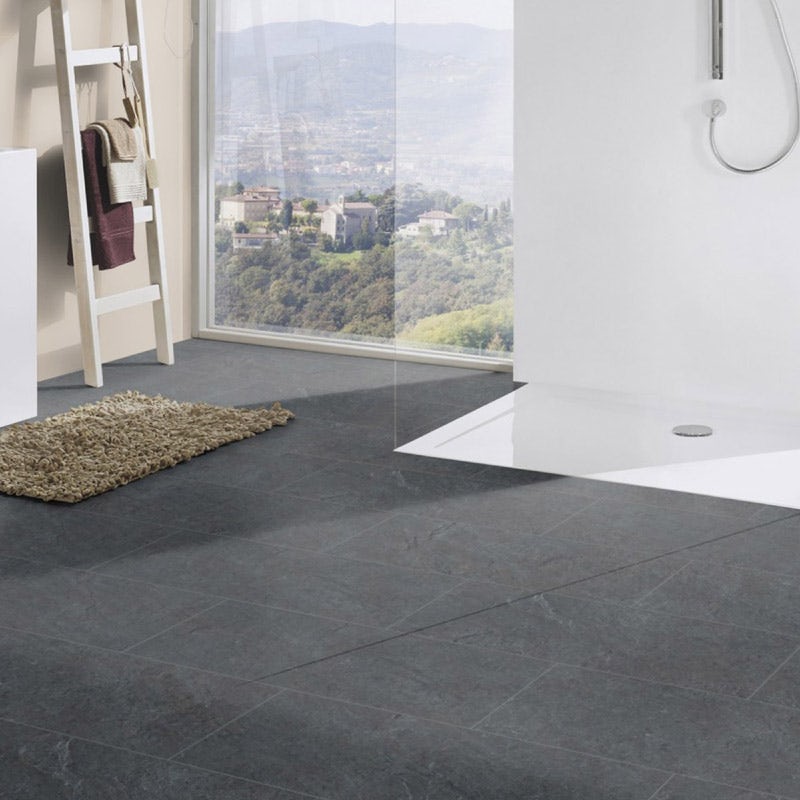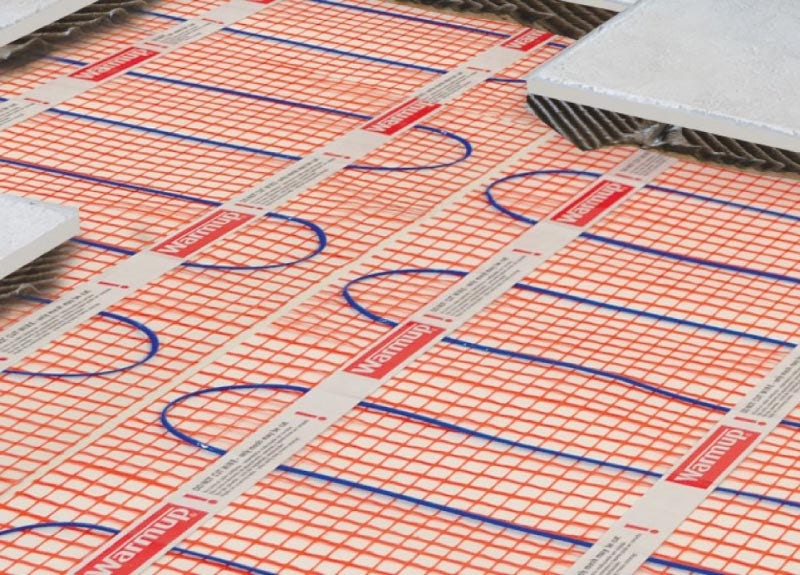If you are weighing up the pros and cons of installing an underfloor heating system in your home, there are a number of factors to consider.
The cost of running the system long-term will be the main concern, as well as the practicalities of using it on a daily basis.
In this article, we go into more detail to explain if underfloor heating will help reduce energy bills and the best temperature settings to use to get the most out of their installation.
Is it expensive to run underfloor heating?
One of the biggest benefits that homeowners are able to enjoy with the installation of underfloor heating is the potential cost savings it can provide long-term.
The cost of installation is a separate issue to how it will impact on your monthly or quarterly energy bills. This is because each fitting is based on a cost per m² and every property has its own unique dimensions. Whether you choose an electric or water-based system will also influence the final price paid for the installation.
Compared to household radiators, the temperatures reached with underfloor heating are usually around the 27-29 degrees Celsius mark, while traditional heating systems tend to need a higher temperature between 66 to 75 degrees Celsius. Although, it's worth bearing in mind that this will vary depending on the floor material installed inside the room.
Once the underfloor heating has been installed, it presents the opportunity to see a return on your investment over time. In general terms, underfloor heating can be more than 30% more efficient than radiator-based systems, which in-turn means less energy is used and bills become more manageable.
The long-term impact being that the money spent on installing the systems can be reclaimed due to lower expenditure on outgoing bills.
Are underfloor heating systems eco-friendly?
Underfloor heating runs at a lower temperature, meaning less energy is expended through the system. This reduces carbon emissions from the provider, making it the perfect green option for eco-friendly bathrooms and homes looking to help the environment.
These systems also offer a more even distribution of heat, compared to radiators which have to constantly work harder to ensure the room stays at the right temperature.
The air circulated by underfloor heating is also cleaner than the moisture-filled air pushed around by radiators. That results in less chance of mould or damp forming in your home, improving the quality of air moving around the property.
Can I install underfloor heating myself?
As with any substantial structural alteration made to your home, the installation of underfloor heating is usually best left to someone with considerable DIY experience.
However, this does apply more to the installation of hydronic (wet) systems than electric systems. This is because a wet system has to be connected to the existing boiler heating system in the property, which is not something a person without the necessary skills should undertake.
On the other hand, electric underfloor heating systems are usually contained within mats that are laid across the subfloor in a similar way to underlay material. While the laying out of the mats is a relatively easy part of the process, the job also involves interacting with electrical wiring, which means extra precaution must be taken.
The use of an electric underfloor heating system also requires a separate thermostat and timer to be installed. This involves rewiring and connecting these items to the mains, which should only ever be carried out by a qualified electrician.
Manufacturers do provide DIY kits for electric underfloor heating, with a series of instructions that most people will be able to follow. However, when it comes to the connecting the cables to the mains supply, a professional must be always used. Also bear in mind that installing any electric heating system in a domestic property also has to be signed off by an electrician, which is stated in the 2005 Part P Building Regulations.
So, to summarise, while it is possible to install both types of underfloor heating systems it must be done so with extra care. There are important parts of the process that should only be carried out by those who have the relevant experience in dealing with these type of property alterations.
Should you leave underfloor heating on all the time?
When it comes to deciding whether or not to leave underfloor heating on all the time, much depends on the time of year. As the temperature starts to settle into double figures in late spring and throughout the summer, you will probably only want to use the heating lightly, if at all.
When it gets to late autumn and the depths of winter, it is advisable to leave your underfloor heating on all day. Although, bear in mind that you should set the temperatures at different levels depending on activity and usage throughout the house.
Using a smart thermostat can prove to be a useful tool that enables you to programme the underfloor heating on a mobile device even when you’re not home. This gives you more control and allows you to manage your energy bills.
The reason why experts believe it is best to leave the system on all the time during the colder months is because it can take anywhere between 2-3 hours for the system to warm up fully. This helps you to avoid moments when the temperature drops too low in the house and it takes some time to remove the chill.
Is electric underfloor heating cheaper than radiators?
You may be concerned that we advise leaving electric underfloor heating on all day as it could lead to higher energy bills which would defeat the purpose of installing the system in the first place. However, there are a number of things that influence the final bill you receive from your energy supplier, some of which you have control over.
The installation of electric underfloor heating can prove to be a cheaper option than radiators. The Department of Energy say that radiant heating (underfloor) is more efficient and cost effective compared to traditional systems.
This is because underfloor heating is referred to as being “radiant”—using radiation to heat surfaces that then retain the heat for a certain period of time. On the other hand, radiators warm the surrounding air, which expends more energy.
Another advantage of using radiant heating instead of conventional systems is that they are not affected by the surrounding air. As we mentioned above when talking about the eco-friendly nature of underfloor systems, there are also health benefits to take into consideration. The cleaner air produced in the property will help people with conditions such as asthma and reduces the likelihood of others picking up airborne infections.
According to OVO Energy, if you manage to identify the right size underfloor heating system, it is able to warm a larger area that may typically experience lower temperatures. This has a positive effect on energy bills, bringing down costs and saving you money.
One final point to remember is related to the insulation you have installed in your home, as this will play a big role in the amount of heat retained or lost in each room.
Not only do you have to ensure your home is well insulated, but that the quality of material is of a good enough standard. This applies to both types of underfloor heating systems, and if you are not sure about what type of insulation to use, it is always best to seek advice from a professional.
As you can tell, there is no easy yes or no answer to this question, as there are a variety of factors that can influence the final bill. But as long as you have good insulation, choose the right size electric underfloor system, manage the temperature levels and install a smart thermostat (as discussed in the section above) then you are more likely to reduce your heating bills than not.
What temperature should it be set to?
The temperature setting used with your underfloor heating system will depend on the type of flooring material in place.
When it comes to timber or engineered wood flooring, the general rule of thumb is not to push the temperature too far above 27°C. This is to protect the integrity of the flooring because wood is a natural material that expands and retracts in response to changes in temperature. Vinyl and laminate flooring also has a recommended temperature setting limit of 27°C.
For underfloor heating installed beneath carpeting, the temperature limit should also be set at 27°C, although the thicker the carpet, the longer it will take to heat the room. A carpet with a tog of no more than 2.5 will enable you to find the right balance.
Tiling and stone floors are considered to be the best conductors of heat and a maximum temperature setting of 29°C should be more than enough to keep the room heated.
If you find that these temperature guidelines are not sufficient and need to be set at a higher level, you may need to consider changing the floor material to allow the underfloor heating to become the sole source of heating for the room.
Find out more about underfloor heating
Here at VictoriaPlum.com, you’ll find plenty of expert advice and information about underfloor heating. Simply click on one of the links below to read an article.
- Warmup underfloor heating buying guide
- Choosing the right flooring for your underfloor heating
- How to calculate BTU for your room
- Bathroom heating advice
Shop underfloor heating at VictoriaPlum.com
If you’ve decided underfloor heating is the best option for your home, we stock a wide range of high quality heating solutions for bathrooms, kitchens and more. Why not browse our underfloor heating range today?






